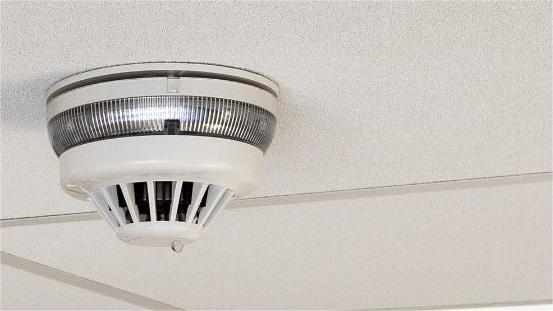Fire Detection Systems
Conventional Fire Systems
Conventional Fire Alarm System is often the natural choice for smaller systems, such as Shops, HMO's, or a Nursary
Addressable Systems
Addressable fire alarm systems are designed for more complex environments or larger commercial premises
Beams and Aspiration
Fire Beams and Aspiration systems provide Fire detection for complex environments. Either because of Height or accesiblity
Service and Maintenance
We have software and tools available to carry out programming “Cause and Effect” depending on your requirement.
Conventional Fire Alarms
Conventional Fire Alarm Systems, in their various forms, have been around for many years and have changed little in that time in terms of technology although design and reliability have improved significantly. A Conventional Fire Alarm System is often the natural choice for smaller systems or where budget constraints exist. Conventional detectors are normally connected to the Fire Control Panel via dedicated circuits, each circuit protecting a designated ‘Zone’ or ‘Area’ of the building. For this reason, it can be limited when a system needs to be modified or reconfigured

Analogue Addressable Fire Alarms
Analogue addressable fire alarm systems are designed for more complex environments such as larger commercial premises and networked systems. Each detector will have its own unique address. This is why these systems are called addressable. Addressable fire alarm systems have the flexibility in terms of programming, to assign each detector, or alarm sounder to be included in a particular zone, or area. In turn, each detector or alarm sounder can be programmed to respond to triggers in each zone accordingly to help quickly identify the location of the fire, saving the disruption of a full evacuation by staging the response or actions. Due to their intelligence, they are more expensive than a conventional fire alarm system, but because of the additional benefits of analogue addressable, such as their pre-alarm features, the number of false alarms can be dramatically reduced, which in turn, saves money
Fire Beams and Aspirations Systems
Fire Beam detectors provide an excellent smoke detector compared to standard optical detectors, in large open areas, or constructions with high ceilings. Examples of which might be Warehouses, Factories, Shopping mails etc.
Utilising reflective detection technology, the detector is formed by two parts: the transmitter-receiver that emits a constant beam of infra-red light and a reflector with a prism that angles the beam back at the transmitter-receiver. A fire is indicated to the panel when the beam is broken.
For greater distances, Fire beams can also be point to point, with transmitter at one end and reciever at the other. Either beam type is connected to either a conventional or addressable alarm system and can provide detection for over 100 metres.
Aspirating Smoke Detection, or ASD for short are typical installed in difficult to access areas for either height reasons, or access. ASD systems can also be find in areas where the environment may be unusually harsh, so as cold storage etc.
The detector is a central detection unit with sampling chambers. These chambers correspond with a network of pipes that draw in the air throughout a building at selected points. This can be air drawn in from multiple points across a single space or across a whole building.
Service, Maintenance, Install, Commission
We can service, maintain and install most Open protocol fire detection systems, both Conventional and Analogue Addressable systems. We have software and tools available to carry out programming “Cause and Effect” depending on your needs and requirement.
We work with equipment from some of the Fire Industries leading manufacturers such as Advanced Electronics, C-Tec, Kentec, Morley, Haes, Apollo, Hochiki
We can also carry out testing and servicing of other equipment includes Fire beams and aspiration systems
All work is carried out to meet current BS5839 standards.
We can also carry out routine service and maintenance for many other systems too, such as Gent, Protect, Notifier, SMS systems

